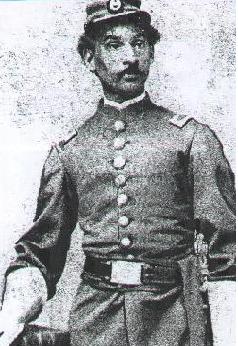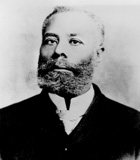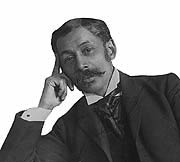In celebration of Black History Month, Alternavox is proud to present some notable personalities who made significant contributions to science and technology. Two of these three also became prominent Toronto citizens and were thoroughly engaged community activism.
Anderson Ruffin Abbott (1837-1913)
download simon says dvd tango cash movie
In 1861, Abbott became the first Canadian-born man of Black heritage to become a licensed physician. He was born to a prominent family in Toronto. His parents, Wilson Ruffin Abbott and Ellen (Toyer) Abbott, were two “free people of colour” who left Alabama to flee violence and eventually settled in Toronto in 1835 or 1836. His father owned several properties in Toronto and was active in politics. Thanks to his family success, he able to have access to an extensive education. An honour student, he eventually studied medicine at the Toronto School of Medicine and did his medical matriculation at the University of Toronto.

Abbott worked as one of eight black surgeons during the American Civil War. His skills in both the operating theatre and in social circles made him a popular figure in the Washington D.C.’s social scene. He enjoyed a close relationship with President Lincoln. When Lincoln was mortally wounded, Abbot was in attendance at his deathbed. Abbott returned to Canada in 1866 where established a medical practice. He was admitted to the College of Physicians and Surgeons of Ontario in 1871 and became a prominent figure in Toronto’s Black Community, like his parents before him. As a man committed to education and integration, 1873 to 1880 Abbott fought against racially segregated schools while president of the Wilberforce Educational Institute, a well-respected school for Chatham’s Black students preparing for university. Abbott was made president of both the Chatham Literary and Debating Society and the Chatham Medical Society in 1878. Abbott believed that access to higher education was essential to the success of individuals in his community.
A prolific writer, Abbott contributed to the Chatham Planet, Colored American Magazine of Boston and New York, the Anglo-American Magazine of London and New York Age. He wrote about medicine, the Civil War, Black history, Darwinism, biology, and poetry. Other notable accomplishments include being chosen as coroner for Kent County, Ontario in 1864, becoming the first Black man to hold that post. In 1892, Abbott was given the highest military honour ever bestowed on a Black person in Canada or the United States when he was appointed aide-de-camp “on the Staff of the Commanding Officers Dept.” of New York.
Abbott died in 1913 at the Toronto home of his son-in-law Frederick Langdon Hubbard, son of Black municipal reformer William Peyton Hubbard, at the age of 76. He is buried in the Toronto Necropolis.
Elijah McCoy (1843–1929)

Elijah McCoy was born in 1843, in Colchester, Ontario. His parents, George and Mildred (Goins) McCoy, were former slaves who had escaped to Canada using the underground railroad. McCoy studied engineering in Scotland and worked as fireman and oiler at the Michigan Central Railroad. His training as an engineer helped him identify and solve the problems of engine lubrication and overheating. In 1872, he invented an automatic lubricator for locomotive steam engines and obtained his first patent. Lubricators helped trains run more efficiently because there was less need to stop for maintenance.
Author Booker T. Washington acknowledged him in Story of the Negro (1909) as having the record for the most patents held by a Black man up until that time. As a result, McCoy became a celebrated figure within the Black community. McCoy was a prolific inventor and by the end of his life, he held 57 patents. Although he lacked funding to properly capitalize from the manufacturing of his lubricators, he did sell his patent rights to his employers or investors. The Michigan Central Railroad employed him as an instructor in the use of his new inventions and later he became a consultant to the railroad industry on patent matters. Towards the end of his career, lubricators with the official McCoy name were manufactured in 1920 when he established the Elijah McCoy Manufacturing Company.
The city of Detroit celebrated Elijah McCoy Day in 1975. A historic marker can be found at the site of his home a street is named after him. The National Inventors Hall of Fame in Akron, Ohio inducted him in 2001. His remains are interred at Detroit Memorial Park East in Warren, Michigan.
William Peyton Hubbard (1842-1935)
Born in Toronto, Hubbard was the son of American slaves who escaped to Canada via the underground railroad. William was sent to the Toronto Model School to learn the trade of baker. The facade of that building can be
postman the frefound on Ryerson University campus. Unlike most other schools at that time, Toronto public schools were not segregated. Sons and daughters of fugitive slaves, like Hubbard, were given a better chance to get a decent education. As an older man, Hubbard would say, “I have always felt that I am a representative of a race hitherto despised, but if given a fair opportunity would be able to command esteem.” His own experiences as a black man coming of age in mid-nineteenth century Toronto laid the groundwork for a career focused on fighting the cause of tolerance and against racial bigotry.
Hubbard’s work as a baker helped him understand the importance of the oven in everyday operations. He invented and patented an oven, which he sold through his company, Hubbard Ovens.
His major claim to fame was in municipal politics, where he was very successful. A champion of the common man, he was re-elected every year for thirteen years (from 1894) and his oratory excellence earned him the nickname “Old Cicero”. He also fought to protect public assets from privatization such as the city’s water supply. In 1907, he made the first call for “public power” and co-founded the first publicly owned hydroelectric company with Adam Beck. That company is now known as Hydro One.
Hubbard remained a popular figure until his death in 1935. Reporters meet with him every year to obtain a quote from the city’s last ‘Grand Old Man’. He is buried at the Toronto Necropolis. Hydro One has established two scholarships in his honour for black students who will study power-related industries at universities and colleges.
